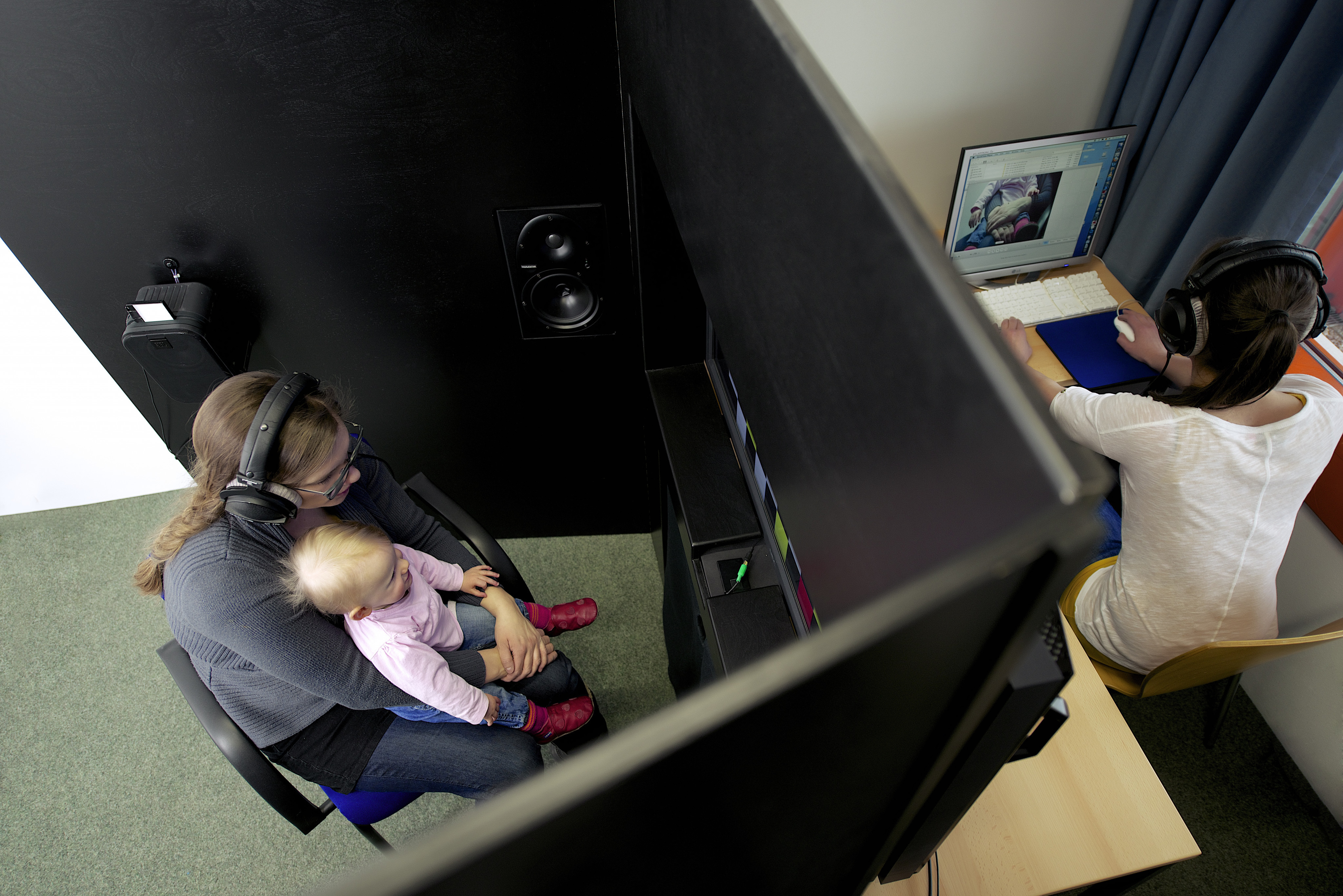
When grown-ups baby talk
Baby Speech Lab at the University of Konstanz participates in international study on infant-directed speech
When parents talk to their babies, they intuitively adapt the way they speak. They slow down, make shorter sentences, change the pitch level more frequently and use another voice quality than when talking to adults. It has been known for some time now that babies pay more attention to this “baby talk” than to normal adult talk. The Baby Speech Lab at the University of Konstanz participated in a large-scale study in which 67 baby speech labs worldwide established the reproducibility, and thus the validity, of this finding. The data on the 2,329 babies’ reactions are, in line with open science philosophy, available to other researchers and can thus lead to further important insights on human language acquisition. The results have been published in the current issue of the scientific journal Advances in Methods and Practices in Psychological Science (AMPPS).
Strong preference for infant-directed speech
To make the results of the individual tests comparable in the “Many Babies” approach, all 67 laboratories used the same speech stimuli, in this case naturally spoken American-English in an infant-directed and adult directed speech style. The result is clear and confirms the preliminary studies: There is a preference for infant-directed speech: shorter utterances, slower and simpler sentences, more extensive pitch level changes, higher pitches, changes of voice quality, including whispering sounds and overarticulated vocals. This is also true for infants in countries in which American English is not the mother tongue.
“From a linguistic point of view it is remarkable that babies for whom the stimuli are not in their native language have the same preference. This means that child-directed speech is much more interesting to them than adult-directed speech, even if it is a foreign language”, says Linguistics Professor Bettina Braun, director of the Baby Speech Lab at the University of Konstanz. German babies, too, show the same preference, although the effect actually is stronger with American babies. Moreover, the preference for infant-directed speech was significantly stronger in older children than younger ones.
Joint approach answers many research questions
The “ManyBabies Consortium” study, conducted by around 150 scientists, covers infants in four age groups: babies aged three to six months, six to nine months, nine to twelve months and twelve to fifteen months. The Baby Speech Lab in Konstanz studied the group of six to nine-month-olds. “The joint approach made it possible to answer many research questions that one laboratory never could have done alone”, says Dr Katharina Zahner, academic staff member in the research team for Phonetics and General Linguistics led by Bettina Braun. The researchers did not only observe how the baby talk effect varied between the age groups, but also how different methods differ. The method in which the children sit on the lap of their parent and show their attention by turning their head in the direction of a speaker to their side displayed stronger effects than the central fixation and eye tracking paradigm, in which the babies look straight ahead.
Many possibilities thanks to open data
Another goal of the study was the usability of data under Open Data conditions. This means that data generated by the network will be freely available, for example, for follow-up studies. Finding collaboration partners for further studies is another goal. “There are a lot of possibilities”, says Bettina Braun. Best-practices can be helpful for other labs, too: In the Konstanz Baby Speech Lab, a position for a baby lab manager was created, who helps in the recruitment of test children and contacts partners. Currently the research questions mainly deal with the acquisition of more than one language (as in multilingual children or in children who learn a dialect and the standard language).
Why is the preference for infant-directed speech so stable? One reason is that it provides an attention mechanism between child and parent. It is clearly beneficial for the child when he or she notices “this information is for me”, as Katharina Zahner puts it. This strengthens the attention mechanism between child and parent which, in turn, is beneficial for language acquisition.
Facts:
- Original publication: The ManyBabies Consortium: Quantifying sources of variability in infancy research using the infant-directed speech preference”, Advances in Methods and Practices in Psychological Science (AMPPS), 16 March 2020 https://doi.org/10.1177/2515245919900809
- Study on infant-directed speech covers 2,329 babies in 16 countries
- The ManyBabies Consortium includes around 150 scientists from 67 baby speech labs in Europe, Asia and North America.
